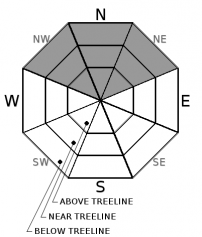| Saturday | Saturday Night | Sunday | |
|---|---|---|---|
| Weather: | Sunny skies. | Partly cloudy skies. | Sunny skies with increasing high level cloud cover. |
| Temperatures: | 40 to 45 deg. F. | 25 to 30 deg. F. | 43 to 48 deg. F. |
| Mid Slope Winds: | SW | SW | SW |
| Wind Speed: | Light winds | Light winds | Light winds increasing to 10 to 15 mph. |
| Expected snowfall: | 0 | 0 | 0 |
| Saturday | Saturday Night | Sunday | |
|---|---|---|---|
| Weather: | Sunny skies. | Partly cloudy skies | Sunny skies with increasing high level cloud cover. |
| Temperatures: | 36 to 42 deg. F. | 26 to 31 deg. F. | 40 to 45 deg. F. |
| Ridge Top Winds: | SW | SW | SW |
| Wind Speed: | 10 to 15 mph with gusts to 30 mph. | 15 to 20 mph with gusts to 35 mph. | 15 to 20 mph with gusts to 40 mph. |
| Expected snowfall: | 0 | 0 | 0 |

























